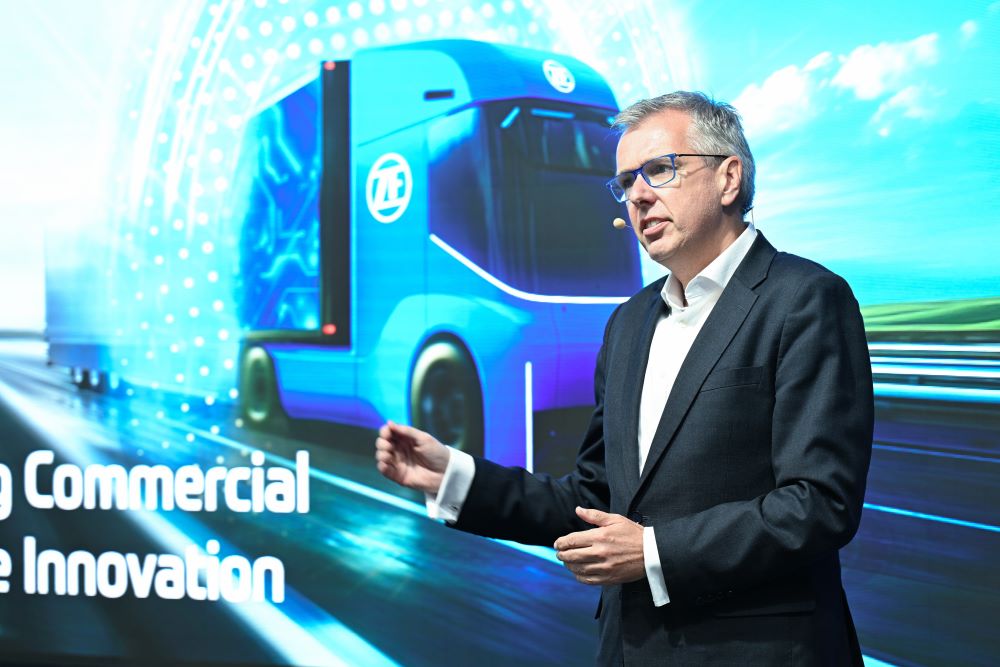
In the run-up to the IAA Transportation 2024, ZF presents its innovations in the areas of decarbonization, chassis, safety and digitalization at its Global Technology Day. The technology group is also announcing a new hybrid transmission system for heavy commercial vehicles, the TraXon 2 Hybrid. Under the motto ‘Driving Commercial Vehicle Innovation,’ ZF, as the largest supplier to the commercial vehicles industry, demonstrates how its broad portfolio of solutions for clean, safe and comfortable mobility of tomorrow can be developed quickly and cost-effectively. Whether for passenger cars, commercial vehicles or industrial vehicles, ZF advances mobility through a consistent open- technology approach, flexible production locations, and cross- divisional technology applications.
In addition to driving solutions for the full electrification of trucks and buses, ZF’s new TraXon 2 Hybrid transmission for heavy commercial vehicles will help to shape the transition to e-mobility and support global CO2 targets. As the number of fully electric vehicle registrations is increasing more slowly than expected – not only for passenger cars but also in the commercial vehicle sector, demand for electric vehicles is stagnating, especially in Europe and the USA, which is leading to price competition in many markets. However, ZF is prepared to support the diverse incremental steps and regional variations in demand during the transition.
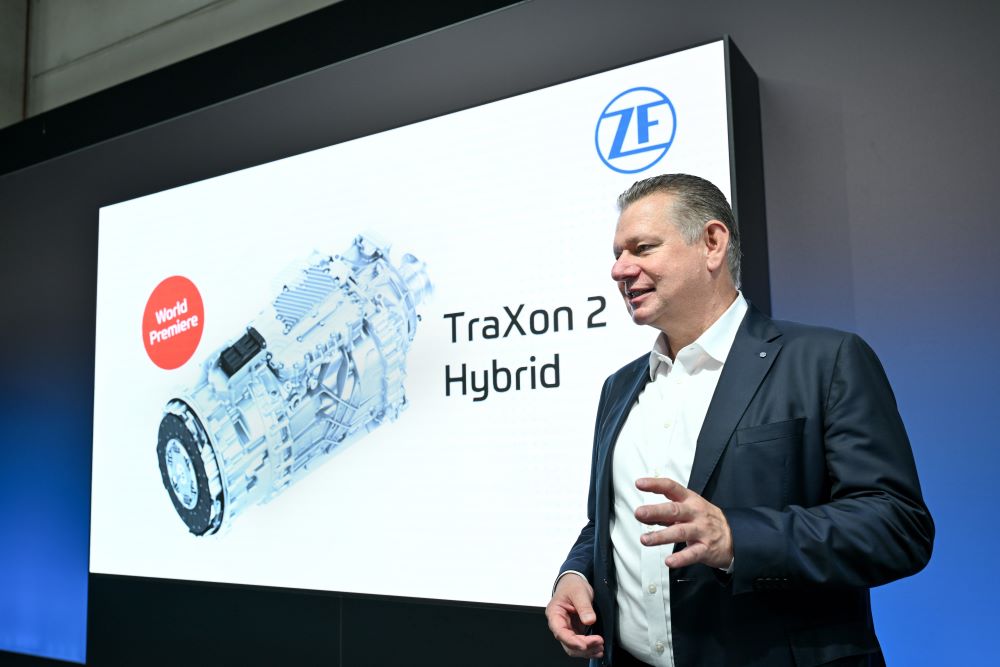
“Thanks to our technology-open approach, the resulting broad product portfolio and the flexibility of our production facilities, we can react quickly to market changes. This enables us to combine technologies and offer our customers the optimal solution in a timely manner at every step of the transformation,” says Prof. Dr. Laier, Member of the Board of Management of ZF Friedrichshafen AG and responsible for the Commercial Vehicle Solutions and Industrial Technology Division as well as the Corporate Production Function.
“One of our greatest strengths is our flexibility. For more than 100 years, openness to technology has been part of the DNA of our corporate strategy. This approach continues to pay off,” says Dr. Holger Klein, CEO of the ZF Group.
Strengthening Strengths
To continue serving customers with technologies for clean, safe and comfortable mobility in the future, ZF is already setting the strategically necessary course today. With a long-term strategic plan, the technology group is further restructuring its organization and accelerating development processes to adapt to the new speed of change of the industry. This new structure includes strong business units for passenger cars, commercial vehicles, the industrial sectors and an efficient aftermarket network. All segments contribute towards remaining on a successful and profitable path in the long term.
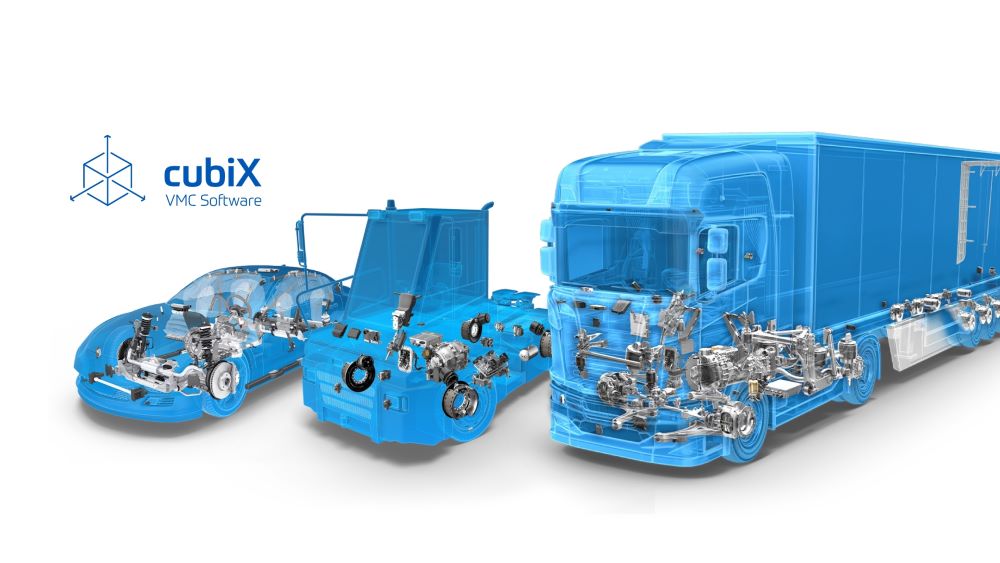
At the same time, other areas will be given the necessary space to develop more quickly and with greater agility to respond to market demands, for example through partnerships or greater independence. In the growing core market for axle system assembly, for example, the strategic partnership with Foxconn, the world’s largest manufacturer of electronic products, is accelerating growth and expanding the customer base of both companies. Another example of implementation is the Passive Safety Technology Division, which now operates as ZF LIFETEC. “By strengthening our strengths, we are creating a strong and sturdy ZF mothership, surrounded by a fleet of speedboats, that help develop the core business,” says Dr. Holger Klein.
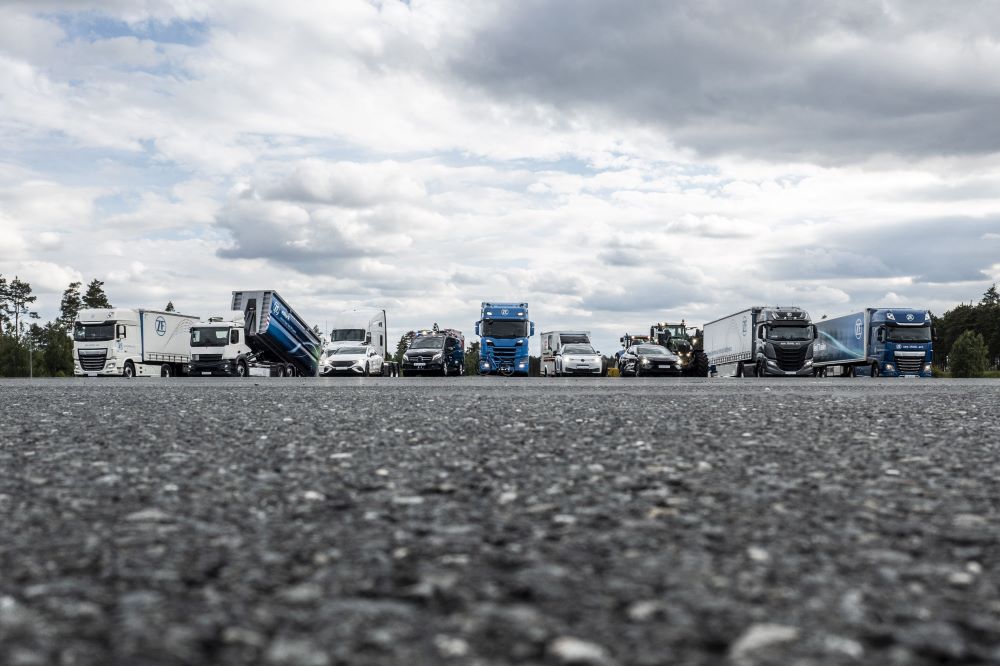
Figures from the Commercial Vehicle Division show that this strategy is the right one: “With organic growth of 20 percent in 2023, our Commercial Vehicle Solutions Division developed disproportionately strongly compared to the market. Together with the Industrial Technology Division, we have two particularly strong performing sectors that enhance our company’s success.”
Expanding cubiX to CVs
ZF’s expertise is not limited to commercial vehicles, but extends to most vehicle classes, which creates synergy effects. As a result, ZF benefits from technology transfers and economies of scale across all its divisions. This puts the technology group in a position to industrialize innovations quickly and offer them to customers at competitive prices. This combination makes ZF a pacemaker in transformation.
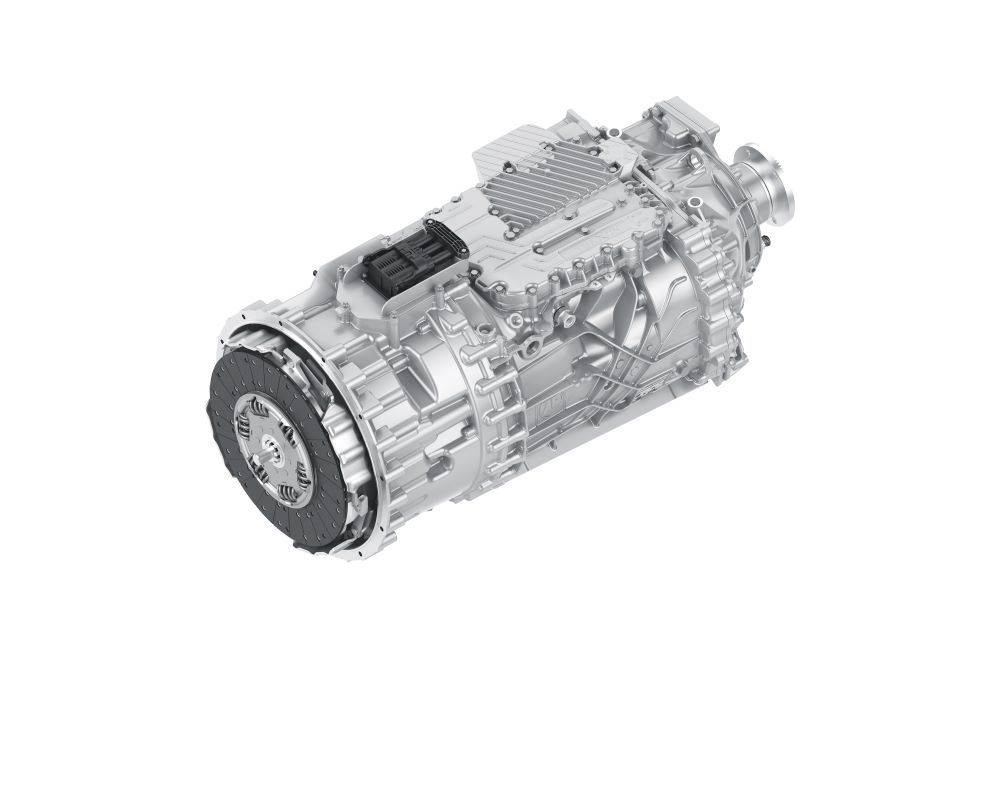
One example of this approach is the launch of the cubiX vehicle motion control software for commercial vehicles. Due to increasing automation, electrified and connected technologies for vehicle motion control are becoming increasingly important. More and more OEM customers are looking for points of differentiation, especially in the chassis area, in terms of functionality, streamlined development and standardized interfaces. cubiX is designed precisely for this purpose. The ZF vehicle motion control software optimizes driving behaviour in regard to stability, safety, precision and performance. cubiX interfaces with virtual driver systems and the vehicle actuators – regardless of whether they come from ZF itself – to ensure optimum vehicle motion.
Originally developed for the passenger car sector where it is already in successful volume production, ZF is now expanding the cubiX portfolio by adding a vehicle motion control offering for commercial vehicle customers, customized to their individual needs. “ZF is therefore entering the market with a unified and holistic portfolio for advanced vehicle motion control – across all vehicle segments.” says Dr. Holger Klein.